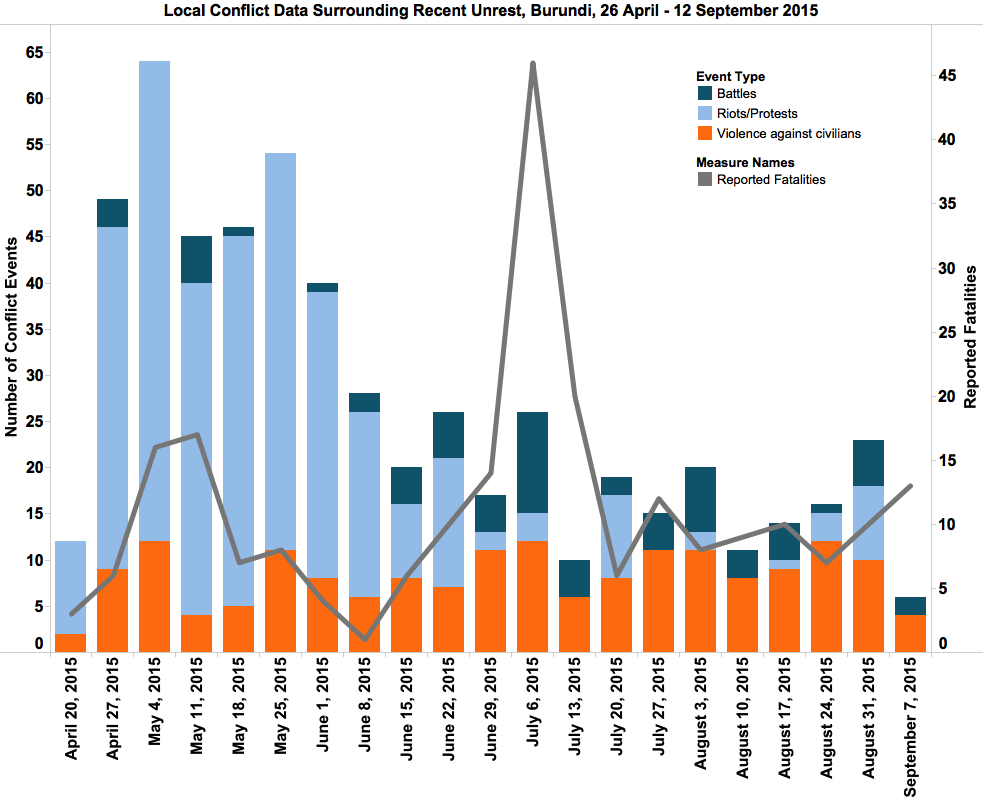ACLED has released a new update of the recent unrest in Burundi, covering events from 26 April to 12 September 2015. This update can be found here. These real-time data draw primarily on crowd-sourced information available from 2015Burundi as well as from ACLED’s weekly real-time conflict data release. Numerous events were included in this update, due to an increase in tensions in the country, as well as due to delays in the reporting of some events from prior weeks.
Violence in Burundi during the first week of September continues to confirm past trends, showing an increase in the number of protests. The nights of September 1 through 3 saw clashes between rioters and police forces throughout Bujumbura. Meanwhile, armed groups continue to operate, as evidenced by the attempt to murder army Chief General Prime Niyongabo on September 11. Arbitrary arrests were also observed against youths who allegedly have engaged in protests.
The swearing in of Pierre Nkurunziza at the end of August is likely to have fostered this renewed process of violence, especially in Jabe and Musaga – the capital’s neighbourhoods that are known to oppose the President’s third term. Furthermore, the recent killing of Union for Peace and Development’s spokesperson contributes to the climate of suspicion toward the ruling party – the CNDD-FDD – as well as police forces.
For more on Burundi local data coverage and analysis, see ACLED’s prior posts on this topic.
AfricaAnalysisCivilians At RiskLocal-Level ViolencePolitical StabilityRioting And ProtestsViolence Against Civilians






